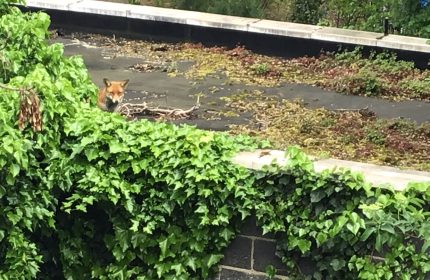Help butterflies thrive with a seasonal to-do list
Butterflies are the focus of this year’s Wild About Gardens campaign. Follow this seasonal calendar to tempt them into your plot.
Get gardening for butterflies is the message from this year’s Wild About Gardens campaign, organised by the RHS and The Wildlife Trusts.
These valuable insects aren’t just beautiful to spot. When they visit flowers to feast on nectar, they spread pollen from plant to plant, helping to produce seeds, while their caterpillars are a vital part of the food chain, feeding birds such as robins, blue tits and sparrows.
However, factors including habitat loss mean numbers have fallen across three-quarters of British butterfly species over the past 40 years.
Gardeners can help plug this gap though by providing food and shelter for butterflies at each stage of their magical transformation, from egg through to fully-fledged adult.
In particular, consider plants for caterpillars to munch on – even if you spot a few leaf holes, remember it all contributes to a healthy, balanced ecosystem.
Help butterflies throughout the year by following this seasonal calendar from the RHS, which should tempt these colourful creatures to your garden…
Spring

Lavender is a magnet for butterflies and bees
As the first butterflies of the year start to emerge, now’s the perfect time to create a mini haven for wildlife. Try planting up a border with nectar-rich plants such as scabious, lavender and hebe, while not forgetting larval food like hops which can be grown up a fence.
Even if space is limited, consider filling a window box with butterfly-friendly aubrieta, forget-me-nots and French marigolds and positioning it in a sunny spot.
Keep your eyes peeled for species such as brimstone, comma, and orange-tip, recording your sightings online at Nature’s Calendar (naturescalendar.woodlandtrust.org.uk).
Summer

The painted lady flourishes in the warmer months
Warmer temperatures see butterfly numbers peak, including exotic visitors such as the painted lady, which overwinters in North Africa.
To give nature a hand, stop mowing a patch of lawn to let insect-friendly ‘weeds’ flower and give meadow butterflies a chance to lay their eggs on the grasses.
Likewise for herbs, marjoram, sage and mint flowers are all great for butterflies and loved by the pretty little mint moth too. With lots of hungry caterpillars also about, look closely to see if you can spot any caterpillars on food plants such as hops, holly and nasturtium for signs of activity and avoid using any insecticides.
Autumn

The brimstone overwinters in UK gardens
Several species of butterfly – including brimstone, comma, small tortoiseshell and peacock – overwinter as adults and will seek out sheltered spots in late autumn to lay dormant until the spring.
Others overwinter as eggs, caterpillars or pupae. Leave mature ivy to flower to offer a late nectar source (the flowers are also eaten by holly blue butterfly caterpillars) and fill some tubs or beds with sweet Williams to provide colourful nectar-filled flowers for butterflies come the spring.
Winter

Consider growing ivy, which blooms from September to November
If you’re stuck indoors, take the chance to plan ahead. Why not make a list of the plants to grow next year to help fill any nectar gaps and lure in butterflies to lay their eggs?
Remember to leave a window ajar on garden sheds or outbuildings, so that small tortoiseshell and red admiral butterflies can shelter in them through winter and delay the tidying of dead stems in borders until late winter to offer lots of safe overwintering spots.
You can make a pledge to help butterflies, find out about planting a butterfly border or a butterfly box, download a free booklet and find out more about wildlife gardening on the Wild About Gardens website (wildaboutgardens.org.uk).
The Press Association
Latest posts by The Press Association (see all)
- Beatles documentary Let It Be to be released on Disney+ - April 16, 2024
- How to keep your money safe – as criminals ramp up AI tactics to steal consumer data - April 16, 2024
- Seasoned marathon runners give their best race day tips for first-timers - April 16, 2024
- What are heat pumps and could they help your home save energy? - April 15, 2024
- Trailer for Bridgerton season three teases new friends-to-lovers romance - April 12, 2024





















